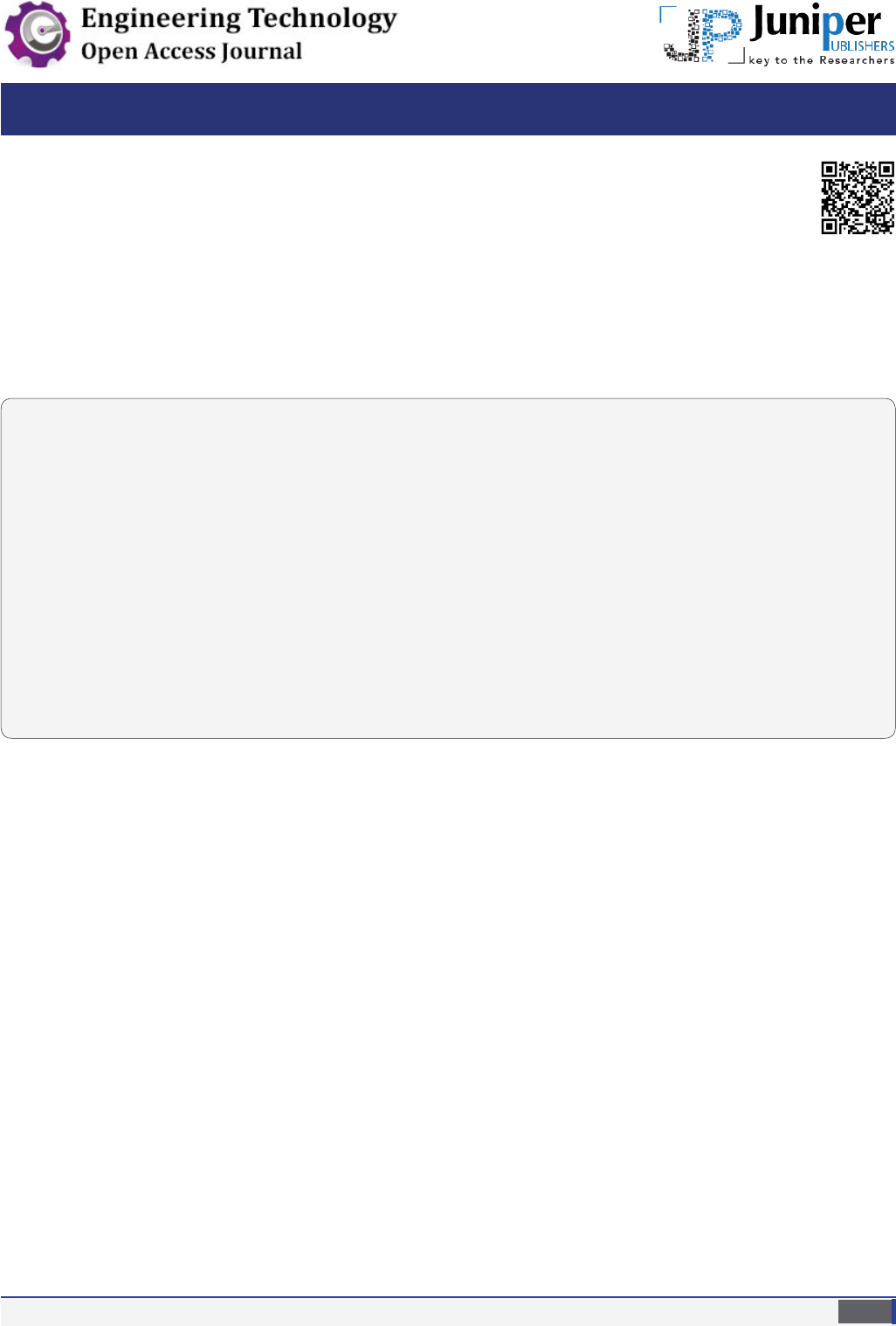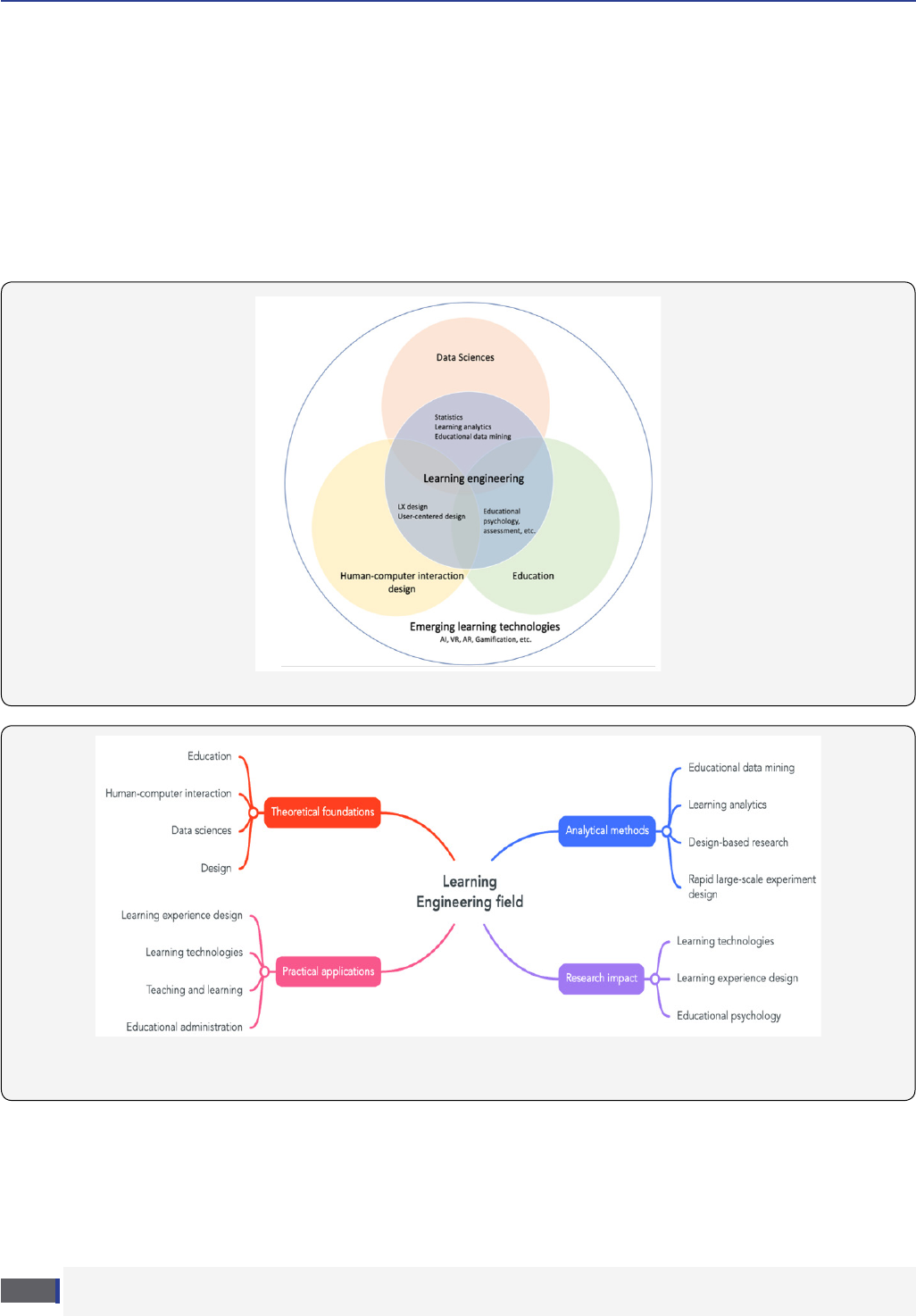
&)>5-":):-$51<-891:>&)>5-":):-$51<-891:>
,41519:8):1<-)5,8/)51?):165)3":;,1-9 633-/-6.,;+):165
-B5-@-)8515/5/15--815/A=1:0:0-#! 8)4-=682-B5-@-)8515/5/15--815/A=1:0:0-#! 8)4-=682
-'0)5/
&)>5-":):-$51<-891:>
786.?0)5//4)13+64
-15)'0;
&)>5-":):-$51<-891:>
4-15)?0;=)>5--,;
6336=:019)5,),,1:165)3=6829):0::79,1/1:)3+644659=)>5--,;+6-()69
)8:6.:0-,;+):165)3,41519:8):165)5,";7-8<19165644659,;+):165)3#-+05636/>
6446595/15--815/6446591/0-8,;+):1656446595315-)5,19:)5+-,;+):165
644659"6+1)3)5,-0)<168)3"+1-5+-9644659)5,:0-%6+):165)3,;+):165644659
!-+644-5,-,1:):165!-+644-5,-,1:):165
-'0)5/-15)'0;-B5-@-)8515/5/15--815/A=1:0:0-#! 8)4-=6825/#-+05637-5++
#
#0198:1+3-19*86;/0::6>6;.68.8--)5,67-5)++-99*>:0-633-/-6.,;+):165):
1/1:)3644659&)>5-":):-:0)9*--5)++-7:-,.6815+3;916515,41519:8):1<-)5,8/)51?):165)3":;,1-9*>
)5);:0681?-,),41519:8):686.1/1:)3644659&)>5-":):-

Conceptual Article
Volume 4 Issue 2 - May 2022
DOI: 10.19080/ETOAJ.2022.04.555635
Eng Technol Open Acc
Copyright © All rights are reserved by Ke Zhang & Meina Zhu
Ke Zhang* and Meina Zhu
385 College of Education, Learning Design and Technology, Wayne State University, USA
Submission: June 04, 2022; Published: June 15, 2022
*
Corresponding author: Ke Zhang, 385 College of Education, Learning Design and Technology, Wayne State University, USA
Eng Technol Open Acc 4(2): ETOAJ.MS.ID.555635 (2022)
001
While Herbert A. Simon used the term “learning engineering”
initially in 1967 [1]; it is just becoming more salient recently
through various venues. For example, the AI Institute for Adult
Learning and Online Education, a USA National Science Foundation
(NSF) funded project, uses “learning engineering” to refer to the
iterative design approach that brings engineering to education
[2]. At the Northwestern University in the USA learning engineers
are hired to “foster deep partnerships with faculty, engage not
only in transforming on-ground classes to online ones, but also in
consulting on broader program design and evaluation, long-term
technology initiatives, and faculty development” [3]. Similarly,
the Massachusetts Institute of Technology (MIT) has learning
engineers on the open learning initiative team. Recently, Carnegie
Mellon University has also posted an opening for a learning
engineer in the Human-Computer Interaction Institute to assist
faculty with technology integration in online or blended courses
to achieve improved learning outcomes through continuous data
analysis [4].
While learning engineers seem to emerge as a new job title,
as indicated above, there is barely a universal understanding of
what learning engineering is or what learning engineers do in
the professional world. Thus, we explore a range of resources,
including scholarly publications and discussions, websites
of selected professional organizations, learning engineering
descriptions, curricula, taskforces, and other resources on
learning engineering. Based on a critical synthesis of the above-
mentioned materials, we argue that learning engineering is an
Scholarly Rhetoric
Scholars have discussed learning engineering from different
perspectives. For example, Baker and Yacef [5] emphasize the
methods, including learning analytics and educational data
mining, together with design-based research to optimize learning.
While Dede and colleagues [6] stress the use of evidence-based
strategies to iteratively design and re-design learner experiences.
The Learning Agency highlights the important applications of
Abstract
publications and discussions, websites and initiatives of selected professional organizations, resources from related USA government and
resources on learning engineering. Based on a critical synthesis of the above-mentioned materials, we argue that learning engineering is an
envision that learning engineering will leverage learning technology for rapid waves of global upskilling and reskilling at scale in the coming
years. This paper is an important initial step leading towards a comprehensive, universal understanding of learning engineering as a professional
explorations on how to assess student learning and programs success.
Learning engineering; Data science; Emerging; Interdisciplinary; Learning technology

How to cite this article: Ke Zhang, Meina Zhu. Dene “Learning Engineering” with the TRAP Framework. Eng Technol Open Acc. 2022; 4(2): 555635.
DOI: 10.19080/ETOAJ.2022.03.555635
002
Engineering Technology Open Access Journal
computer science and describes learning engineering as “the
use of computer science to pursue rapid experimentation and
continuous improvement with the goal of improving student
goal of learning engineering is to make improvements during its
active implementations.
Recent scholarly publications further highlight the
interdisciplinary nature of learning engineering. In the “High-
Leverage Opportunities for Learning Engineering” report, Baker
knowledge and theory on learning, and applies a rigorous
combination of theory, data, and analysis to develop and improve
educational systems and methodologies to produce enduring,
learning design, computer science, data science, behavioral
science, and cognitive psychology [9]. Likewise, Anindya Roy
notes its deep roots in learning science, educational technology,
and data science [10]. Despite the scholarly discussions, there is a
lack of shared understanding of what learning engineering entails,
nor do we know enough about how to prepare people for learning
engineering research and development.
Related Professional Organizations
While it is virtually impossible to identify all professional
organizations related to learning engineering, especially
considering its interdisciplinary roots [5,6,9,10] we select
the following organizations for review and explorations: (1)
the Association for the Advanced of Computing in Education
(AACE); (2) the Association for Educational Communications
and Technology (AECT); (3) the International Society of the
Learning Sciences (ISLS); (4) the Society for Learning Analytics
Research (SoLAR); (5) International Educational Data Mining
Society (IEDMS); (6) IEEE IC Industry Consortium on Learning
Engineering (ICICLE), and (7) Futures Forum on Learning
(FFoL). We use “learning engineering” and “learning engineer” as
keywords to search for any relevant literature, initiatives, or task
forces in February 2022. The following summarizes our search
The Association for the Advancement of Computing in
Education (AACE)
AACE is an international organization that aims to advance
information technology in education and the research and
development of e-Learning [11]. It has a strong tradition of serving
interdisciplinary professionals through conferences, publications,
awards, and a career center. Our multiple rounds of search on the
AACE website do not yield any results of “learning engineering” or
“learning engineer.”
The Association for Educational Communications and
Technology (AECT)
AECT members include educators, learning technologists,
instructional designers, and researchers with a shared goal to
improve teaching and learning (AECT, 2022) [12]. AECT has created
content knowledge, content pedagogy, learning environments,
professional knowledge and skills, and research. However, it
to leverage dynamic, large-scaled data to enhance teaching and
learning. Searches on AECT and its divisions’ websites yield no
results of “learning engineering” or “learning engineer.”
ISLS is an international organization devoted to empirical
studies on learning [13]. Learning science research traditionally
focuses on the psychological and theoretical foundations of
learning and the design of learning environments. It is considered
the ISLS does not mention “learning engineering” or “learning
engineer” on its website.
SoLAR is “an inter-disciplinary network of leading
international researchers who are exploring the role and impact
of analytics on teaching, learning, training and development.”
(SoLAR, 2022) [14]. Learning analytics has become increasingly
important in the past decade. As a relatively new organization
established in 2011, SoLAR provides a platform for scholars from
different disciplines. But its website does not post any rhetoric on
learning engineering.
International Educational Data Mining Society (IEDMS)
Educational data mining (EDM) is another closely related
learning to information generated from educational settings [15].
The EDM community members are primarily from psychology
[5,10] our search on the IEDMS website does not yield any results
concerning “learning engineering” or “learning engineer.”
I
The IEEE IC Industry Consortium on Learning Engineering
establishment in 2017. ICICLE is a “professional organization
committed to the development of Learning Engineering as a
profession and as an academic [15].” ICICLE is part of the IEEE
Standards Association’s (IEEE-SA) Industry Connections (IC)
program. Its original goals are to deliver “(1) a set of technical
resources for Learning Engineers; (2) a Conference on Learning
[16]. Currently, the organization has four special interest groups
(i.e., Design for Learning, Curriculum and Competencies, Tools,
and Learning Engineering as a Profession) and three market
interest groups (i.e., Higher Education, Corporate, and K12).

How to cite this article: Ke Zhang, Meina Zhu. Dene “Learning Engineering” with the TRAP Framework. Eng Technol Open Acc. 2022; 4(2): 555635.
DOI: 10.19080/ETOAJ.2022.03.555635
003
Engineering Technology Open Access Journal
engineering as “a process and practice that applies the learning
sciences, using human-centered and engineering design
methodologies, and [Iterative] data-informed decision making
to support learners and their learning.” It starts with a learning
decisions through multiple levels of the context system. Then,
learning engineers need to understand the problem context,
such as learners, contexts, and available resources. Next, a team
should be formed to solve the problem. The team could design
and develop a solution along with instrumentation with multiple
rounds of iterations. Then, they could implement the solution,
gather data via instrumentation, analyze data, and use the results
to provide feedback on the learning engineering process. It is an
iterative process [18].
Besides the organizations mentioned above, Futures Forum
on Learning is part of Schmidt Futures’ larger initiative to enhance
by leveraging computing and data to dramatically increase
the effectiveness of learning science as a discipline” [19]. It has
organized Learning Engineering Tools Competition since 2020. It
aims to provide support to new tools that could improve learning
Garg, director at Schmidt Futures, stresses the three key elements
of learning engineering (i.e., data collection, data analysis, and
iterations of design of the educational tool or system) to improve
learning [20].
The search results clearly indicate that these major professional
learning science, educational data mining, and learning analytics)
have yet to adopt the term “learning engineering.” And there is not
Graduate Degree Programs in the USA
Even though learning engineering as a profession or an
institutions have already started offering graduate degree
programs to prepare learning engineering professionals. The
varied program curricula provide another lens to examine how
of learning engineering. Thus, in the following, we review the
curricula in two universities offering such programs in the USA:
Boston College and Carnegie Mellon University.
Boston College
Boston College (BC) offers a one-year, 30-credits Master of Arts
program in Learning Engineering. The curriculum highlights “the
hands-on design experience, interdisciplinary knowledge, and
technical savvy” and prepares students for the following careers
as learning engineers, learning experience designers, instructional
designers, curriculum developers, or educational technology
consultants [21]. The program curriculum integrates four areas,
(1) learning theories and cognitive sciences, (2) learner-centered
design, (3) design considerations to promote justice, diversity, and
teamwork. Accordingly, the program faculty is from disciplines
like psychology, learning sciences, education, evaluation, and
educational leadership.
Consistent with the program curriculum and faculty
systematic application of principles and methods from the learning
sciences to support and improve our understanding of learners
and learning processes. The discipline leverages human-centered
design principles to iteratively develop and improve products and
services that empower learners—often using technology” [21].
Carnegie Mellon University (CMU)
Carnegie Mellon University has established a Master of Educational
Technology and Applied Learning Science (METALS) program. The
principles,” “educational goals, instruction and assessment,” “tools
for online learning,” “interaction design overview,” and “METALS
three distinctive areas, (a) technology, (b) learning sciences
theory & instructional design, and (c) methods & design. Students
must choose a minimum of three elective courses from at least two
of the three areas. The METAL faculty bring an array of expertise
interaction, learning analytics, anthropology, psychology, media
design, learning sciences, and computational linguistics. Most
of the METAL faculty members have a background in computer
science or human-computer interaction.
The executive director of CMU’s Open Learning Initiative
for Online Courses, Norman Bier, considers CMU as a standard-
bearer for the learning engineer profession. With various
combinations of the elective courses from two or three distinct
such as learning engineers, instructional designers, learning/
user experience designers, educational evaluators, curriculum
developers, project managers, educational data scientists,
educational technology consultants, or and entrepreneurs.
Consistent with its interdisciplinary curriculum and faculty, the
METALS program website articulates that a learning engineer’s
job is to “apply science of learning principles, evidence-based
data-driven methods to design, create, and improve educational
resources and technologies that enable students and instructors
to succeed” [22].

How to cite this article: Ke Zhang, Meina Zhu. Dene “Learning Engineering” with the TRAP Framework. Eng Technol Open Acc. 2022; 4(2): 555635.
DOI: 10.19080/ETOAJ.2022.03.555635
004
Engineering Technology Open Access Journal
Recent Learning Engineering Posts
Our searches on the website of the USA Department of
Education and that of an international organization, the North
Atlantic Treaty Organization (NATO), yield no results of learning
engineering jobs as of February 2022. However, two learning
engineer jobs are posted in early 2022 in the USA. One was posted
by CMU in March 2022 [23] and the other one was from the private
sector, Lockwood Hills company [24].
CMU is a leading institution in higher education; and they
search for learning engineers to create and implement “technology
learning engineering, learning experience design, or instructional
the traditional instructional design skills (e.g., creating learning
and experiences in creating educational technology, learning
analytics, and related educational research. More importantly, the
post emphasizes that ideal candidates must be skillful in learning
analytics and emerging learning technology.
The Lockwood Hills company “provides critical mission
support services for federal civilian and military operations”
[24]. Similarly, they also emphasize the skills and experiences in
advanced technologies and analytical methods for the learning
engineer position. For example, the learning engineer’s job
responsibilities include to “develop learning analytics and
associated dashboards (i.e., visualizations of learning data).” More
analytics, educational data mining, and emerging learning
technology such as mixed reality [24].
Despite the drastic differences in their professional settings
and target learners, the two recent posts both highlight the
importance of learning analytics and emerging technology skills
for successful learning engineers. This is consistent with the
scholarly discourses, with heavy emphasis on the interdisciplinary
nature of learning engineering.
Finding “Learning Engineering”
A. Simon from CMU, in his 1967 article, “The Job of a College
President” [1]. Back then, Simon articulated that learning
engineers, through collaborations with faculty, would provide
“concrete demonstrations of increased learning effectiveness,
on however small a scale initially, will be the most powerful
means of persuading a faculty that a professional approach to
their students’ learning can be an exciting and challenging part
of their lives” (p. 77). Lately, the FFOL and the USA NSF have
adopted the term “learning engineering.” In higher education,
some universities have hired learning engineers for imperative
roles. Professional organizations, such as the SoLAR and IEDMS,
also highlight the importance of leveraging large data and the
computational approaches to data analysis; however, they do
professional organizations we have explored in this article, only
two of them specialize in learning engineering, ICICLE and FFoL.
Given the emerging need for professionals with the capacity
to leverage large-scaled data to enhance learning environments,
the demands for learning engineers are increasing. However, the
programs that offer learning engineering are rather limited. Our
search yields only two-degree programs in learning engineering
in the USA. And the two graduate programs at BC and CMU
vary remarkably in their curricula, faculty areas of expertise,
and students’ career paths. Obviously, there is little shared
understanding of learning engineering as a professional or
Researchers and practitioners have rich discussions on
learning engineering. As indicated above, a variety of skills
learning environment engineering, education and training
professional practices, assessment, measurement, evaluation,
subject matter expertise, learning sciences, data science, and
software engineering.
Dening “Learning Engineering”
Based on a critical synthesis, we argue that learning
in scholarly rhetoric, program curricula, job descriptions, and
professional organizations’ initiatives, the goal of learning
engineering is to improve learner outcomes. Learning Engineering
has a strong interdisciplinary foundation in education (e.g.,
educational psychology, cognitive science, assessments,
evaluations, etc.), data sciences (e.g., statistics, educational data
mining, learning analytics), emerging learning technologies (e.g.,
human-computer interaction design (e.g., user experience design,
learning experience design, etc.). The relationships between
First, learning engineering has deep roots in education, as it
leverages the theories and applications of educational psychology
and assessments to improve learning experiences and outcomes.
Second, learning engineering adopts the analytical methods in
data sciences, such as learning analytics, [25-27] educational data
mining, [28-30] and other emerging methods. Third, learning
engineering follows the principles of human-computer interaction
design to create better learning experiences or adaptive learning
ecosystems. In addition, the emergent learning technologies
demand more research on learning engineering, while scaling up
the capacity of digital learning. Moreover, the implementation of

How to cite this article: Ke Zhang, Meina Zhu. Dene “Learning Engineering” with the TRAP Framework. Eng Technol Open Acc. 2022; 4(2): 555635.
DOI: 10.19080/ETOAJ.2022.03.555635
005
Engineering Technology Open Access Journal
(AR) also generates large data, which in turn can be dynamically
analyzed for constantly improved learning systems and outcomes.
Further, we propose a framework named TRAP (see Figure
Theoretical foundations, (2) Research impacts, (3) Analytical
methods, and (4) Practical applications (Figure 2) (hence the
the theoretical foundations of learning engineering include
education, human-computer interaction, data sciences, and
on the theories in education (e.g., learning theories, educational
psychology, cognitive sciences, etc.), human-computer interaction
(e.g., user-centered design, participatory design, etc.), data sciences
(e.g., learning analytics, educational data mining, etc.), and design
(e.g., learning experience design, educational multimedia design,
instructional design, etc.).
Figure 1: Learning engineering and related elds.
Figure 2: The TRAP Denition of “Learning Engineering”.
Second, learning engineering has direct impacts on learning
technologies, learning experience design, and educational
psychology. The research and practice of learning engineering
also apply, test, improve, and generate new theories and models
to guide the design and development of learning technologies,
learner experiences, and the broader learning ecosystems [6,31].
We envision that learning engineering will leverage learning
technology for rapid waves of global upskilling and reskilling of
the workforce at scale in the coming years.

How to cite this article: Ke Zhang, Meina Zhu. Dene “Learning Engineering” with the TRAP Framework. Eng Technol Open Acc. 2022; 4(2): 555635.
DOI: 10.19080/ETOAJ.2022.03.555635
006
Engineering Technology Open Access Journal
Third, learning engineering applies a range of analytical
methods, such as educational data mining, [28-30], learning
analytics [25-27], design-based research methods, and rapid large-
scale experiment design. Despite some shared characteristics,
educational data mining and learning analytics are distinctive
based research enables the researchers to improve both education
practices and theories via iterations [33]. Meanwhile, rapid large-
scale experiment design is typically used with large data and
computational approaches. Applying these distinct analytical and
research methods, learning engineering creates, evaluates, and
improves the learning technologies and environments, as well as
learner experiences and outcomes. Finally, learning engineering
has a range of practical applications in learning experience design,
learning technology design and development, teaching and
learning, and educational administrations [6,31, 34,]. Rooted in
the cross section of learning science, data science, and computer
science, learning engineering provides new perspectives on
educational technology and instructional design [31,35-37]. For
example, the research and practice of learning engineering bridge
the learning research and teaching practice [31] and improve
teaching and learning through the dynamic applications of data
analytics and adaptive learning ecosystems [6,34] Moreover,
it could have broader impacts on the institutional, regional,
national, and international levels, while empowering educators,
administrators, leaders, and policymakers with data-driven
decision making.
Discussion
and digital games in education, large-scale data are generated
every day. Not surprisingly, big data analytics is among the top
technologies to be adopted by 2025 [38]. They also transform
the ways of teaching, learning, and talent development, as well as
serious games, [41,42] and AI for education [43], to name a few.
and reskilling of the workforce across the world. Approximately
ninety-seven million new jobs are expected by 2025, which
skills and competencies [38]. However, only 42% of employees
reportedly participate in employer-supported opportunities for
reskilling and upskilling [38].
Thus, it is critical to create effective resources for rapid learning
and training opportunities at scale, with emergent technologies to
improve the learning ecosystems. The needs for a technology-ready
workforce and large-scale digital learning are calling for a new
deep and comprehensive understanding of learning engineering
is crucial to guide the collaborations across disciplines. Thus, in
this article, we report the explorations and synthesis of scholarly
discussions, job descriptions, program curricula, websites, and
other resources from researchers, professional organizations,
government and agencies, and higher educational institutions
in the USA [44-49]. Despite the nuances in scholars’ rhetoric,
they agree that learning engineering is interdisciplinary with
interaction, and data sciences as indicated in (Figure 1). With
select the most appropriate methods, technologies, or theoretical
engineering illustrates its theoretical foundations, research
implications, analytical methods, and practical applications.
research and theories guide the practice and research of learning
engineering. To bridge learning research and teaching practice, a
solid knowledge base in educational psychology, learning sciences,
assessments, and evaluations is essential. Human-computer
interaction design also plays an imperative role in learning
engineering, including user experience design, human-centered
design and more. In addition, expertise in data science and design
is critical in learning engineering. The analytic methods leveraged
from data science (e.g., learning analytics, educational data
mining), as well as design-based research and rapid large-scale
with both research impacts and practical applications.
Conclusion
In the coming years, the demand for learning engineering will
increase dramatically, as we address the global needs for upskilling
and reskilling the workforce through rapid and adaptive learning
ecosystems at scale. This paper is an important initial step leading
towards a comprehensive, universal understanding of learning
and researchers with knowledge and skills in the cross section
of education, data sciences, design, and technology. The TRAP
the core competences of learning engineering, which will lead to
more rigorous programs in higher education, Moving forward,
on how to assess student learning and programs success.
References
1. Simon H A (1967) Job of a college president. Educational Record 48(1):
68-78.
2. Georgia Research Alliance, INC. (2021) AI institute for adult learning
and online education (ALOE) (2021). National Science Foundation.
3. Dyar A, Haseley H, Jackson R (2017) Meet Northwestern’s learning
engineers. Northwestern University.

How to cite this article: Ke Zhang, Meina Zhu. Dene “Learning Engineering” with the TRAP Framework. Eng Technol Open Acc. 2022; 4(2): 555635.
DOI: 10.19080/ETOAJ.2022.03.555635
007
Engineering Technology Open Access Journal
4. Higheredjobs.com. (2022). Learning Engineer - Human Computer
Interaction Institute - School of Computer Science (SCS), Carnegie
Mellon University.
5. Baker R S J D, Yacef K (2009) The state of educational data mining in
2009: A review and future visions. J Edu Data Mining 1(1): 3-17.
6. Dede C, Richards J, Saxberg B (Eds.) (2018) Learning engineering for
online education: Theoretical contexts and design-based examples.
Routledge.
7. Learning engineering hub (n.d.) The learning agency. Retrieved March
15, 2022,
8. Baker R S (2022) The practice of learning engineering. Future Forum
for Learning.
9. Baker R S, Boser R (2021) High-Leverage opportunities for learning
engineering. Philadelphia, PA: University of Pennsylvania Center for
Learning Analytics.
10. Nelson S (2019) Q & A with Anindya Roy, learning engineer in MIT’s
Open Learning. MIT
11. AACE. (n.d.). About AACE.
12. https://www.aect.org/about_us.php.
13. The International Society of the Learning Sciences (ISLS).
14. The Society for Learning Analytics Research.
15. ICICLE (n.d.) What is ICICLE? IEEE.
16. ICICLE. (n.d.). Learning engineering. IEEE.
17. Kessler A, Totino L (2020) Operationalizing the learning engineering
process to create an online training: An example from mit open
learning.
18. Goodell J, Kessler A, Kurzweil D, Koldner J (2020) Competencies of
Learning Engineering Teams and Team Members. In IEEE ICICLE
proceedings of the 2019 Conference on Learning Engineering,
19. Futures Forum on Learning (2022).
20. Garg K (2022) Overview of learning engineering. Future Forum for
Learning.
21. Boston College (2022) Master of Arts (M.A.) in Learning Engineering.
Boston College.
22. https://metals.hcii.cmu.edu/
23. Carnegie Mellon University (2022) Learning Engineer - Human
Computer Interaction Institute - School of Computer Science (SCS).
Higher EdJobs.
24. NANA (2022) Learning Engineer (Remote) NANA Regional Corporation.
25. Ferguson R (2012) Learning analytics: drivers, developments, and
challenges. Int J Techno Enhanced Learning 4(5-6): 304-317.
26. Siemens G (2013) Learning analytics: The emergence of a discipline.
Ame Behav Sci 57(10): 1380-1400.
27. Ye D (2022) The History and Development of Learning Analytics in
Learning, Design, & Technology Field. TechTrends 1-9.
28. Dutt A, Ismail M A, Herawan T (2017) A systematic review on
educational data mining. Ieee Access 5: 15991-16005.
29.
1995 to 2005. Expert systems with applications 33(1): 135-146.
30.
state of the art. IEEE Transactions on Systems, Man, and Cybernetics,
Part C (Applications and Reviews) 40(6): 601-618.
31. Thille C M (2016) Bridging learning research and teaching practice for
the public good: The learning engineer. New York, NY: TIAA Institute
32. Calvet Liñán L, Juan Pérez Á A (2015) Educational Data Mining and
Learning Analytics: differences, similarities, and time evolution. Int J
Edu Techno in Higher Edu 12(3): 98-112.
33. McKenney S, Reeves T C (2018) Conducting educational design
research. Routledge.
34.
A Case Study of Adaptive Courseware Development. In International
Conference on Human-Computer Interaction pp: 105-119.
35. Bozarth J (2019) Nuts and Bolts: Learning Engineering? Instructional
Design? Learning Solutions.
36. Wagner E, Blackmon O (2018a) Learning Engineering: The Next Wave
for eLearning. Learning Solutions.
37. Wagner E, Blackmon O (2018b) Learning Engineering and the Future
of eLearning. Learning Solutions.
38. World Economic Forum (2020). The Future of Jobs Report 2020.
39. Zhu M, Sari A R, Lee M M (2022) Trends and Issues in MOOC Learning
Analytics Empirical Research: A Systematic Literature Review (2011-
2021). Education and Information Technologies 1-26.
40. Zhang K, Aslan A B (2020) Preparing industry-ready engineers with
virtual reality: recent research and future directions. Int J Smart Techno
and Learning 2(2-3): 136-150.
41.
interaction mode and story structure in virtual reality serious games.
Computers & Education, 143, 103671.
42.
adaptivity and learning supports in educational games. J Comp Assisted
Learning 37(1): 127-141.
43. Zhang K, Aslan A B (2021) AI technologies for education: Recent
Intelligence 100025.
44. Boser R (2019) Learning engineering: It’s a game changer. The learning
agency.
45. Long P D (2018) The role of the learning engineer. In Learning
Engineering for Online Education pp: 17-35 Routledge.
46. ISLS By-Laws (2016).
47. https://www.solaresearch.org
48. https://metals.hcii.cmu.edu/
49. AECT Standards for Professional Education Programs (2012).

How to cite this article: Ke Zhang, Meina Zhu. Dene “Learning Engineering” with the TRAP Framework. Eng Technol Open Acc. 2022; 4(2): 555635.
DOI: 10.19080/ETOAJ.2022.03.555635
008
Engineering Technology Open Access Journal
• Quality Editorial service
• Swift Peer Review
• Reprints availability
• E-prints Service
• Manuscript Podcast for convenient understanding
• Global attainment for your research
• Manuscript accessibility in different formats
( Pdf, E-pub, Full Text, Audio)
• Unceasing customer service
https://juniperpublishers.com/online-submission.php
This work is licensed under Creative
Commons Attribution 4.0 License
DOI: 10.19080/ETOAJ.2022.03.555635
